10 Best Snapdragon Chipsets of 2025
Qualcomm Snapdragon is a leading chip manufacturer, powering a wide range of devices, from smartphones and tablets to laptops. With options catering to all segments, from entry-level to flagship, Snapdragon chips are well-known for their performance and versatility.
In the entry-level category, the Snapdragon 600 series, along with the Snapdragon 6 Gen and Snapdragon 4 Gen series, offers great value. For the mid-range market, we have the Snapdragon 7 Gen series, while the flagship Snapdragon 8 series takes the lead in terms of performance.
While Snapdragon chips are commonly found in high-end devices, they also stand out due to their superior ISP (Image Signal Processor) technology, which generally outperforms competitors in mobile photography.
But with so many Snapdragon chips available, which ones are truly the best? Are they all from the Snapdragon 8 series? Let's dive into the list of the top Snapdragon chipsets!
1. Snapdragon 8 Elite

The Snapdragon 8 Elite succeeds the Snapdragon 8 Gen 3 that brings significant improvements in performance and features for a better mobile experience.
One key upgrade is the 3nm fabrication process by TSMC, which enhances both power efficiency and performance. While many new chips boast better efficiency and performance, the Snapdragon 8 Elite lives up to this promise, especially with its Oryon-based CPU—technology previously used in the Snapdragon X series for laptops.
The Oryon CPU delivers impressive speed and responsiveness. There is also a noticeable improvement in AI (artificial intelligence) capabilities, making smartphones with the Snapdragon 8 Elite excel in AI-driven features.
For instance, the Samsung Galaxy S25 series emphasizes its AI features, with many reviewers saying that its AI performance is superior to the iPhone 16 series.
Qualcomm rebranded the Snapdragon 8 series and moved away from calling it Snapdragon 8 Gen 4. Instead, it’s named Snapdragon 8 Elite that reflects the Oryon architecture, also used in laptops under the Snapdragon X Elite name.
The Snapdragon 8 Elite features six performance cores, clocked at up to 3.53 GHz. Notably, it does not have efficiency cores, as analysis of modern application workloads shows that more performance cores offer better overall optimization.
Additionally, the Adreno GPU provides up to a 20% improvement in graphics performance compared to the previous generation, ensuring a smooth and immersive gaming experience even at the highest settings.
Several top smartphone manufacturers, including iQOO with the iQOO 13, have adopted the Snapdragon 8 Elite.
The iQOO 13 offers impressive features, such as a 144Hz AMOLED display, a 6150mAh battery with 120W fast charging, and a 7000mm VC cooling system.
Other phones, like the ASUS ROG Phone 9, nubia Z70 Ultra, and the Samsung Galaxy S25 series, also feature this powerful chip. Notably, Qualcomm and Samsung collaborated on a custom version of the Snapdragon 8 Elite for the Galaxy S25 series.
In terms of performance, the Snapdragon 8 Elite performs exceptionally well in synthetic benchmarks. It scored an impressive 3,025,991 points on AnTuTu, surpassing the Apple A18 Pro in the iPhone 16 Pro Max.
On Geekbench, the Snapdragon 8 Elite earned a score of 3,260 in single-core and 10,051 in multi-core, nearly 50% higher than the Snapdragon 8 Gen 3.
This performance boost is complemented by enhanced AI capabilities, which enable faster and more efficient data processing.
This leads to improvements in everything from photo and video quality to gaming and app optimization. The Snapdragon 8 Elite is truly a powerhouse chipset for mobile devices.
2. Snapdragon 8 Gen 3
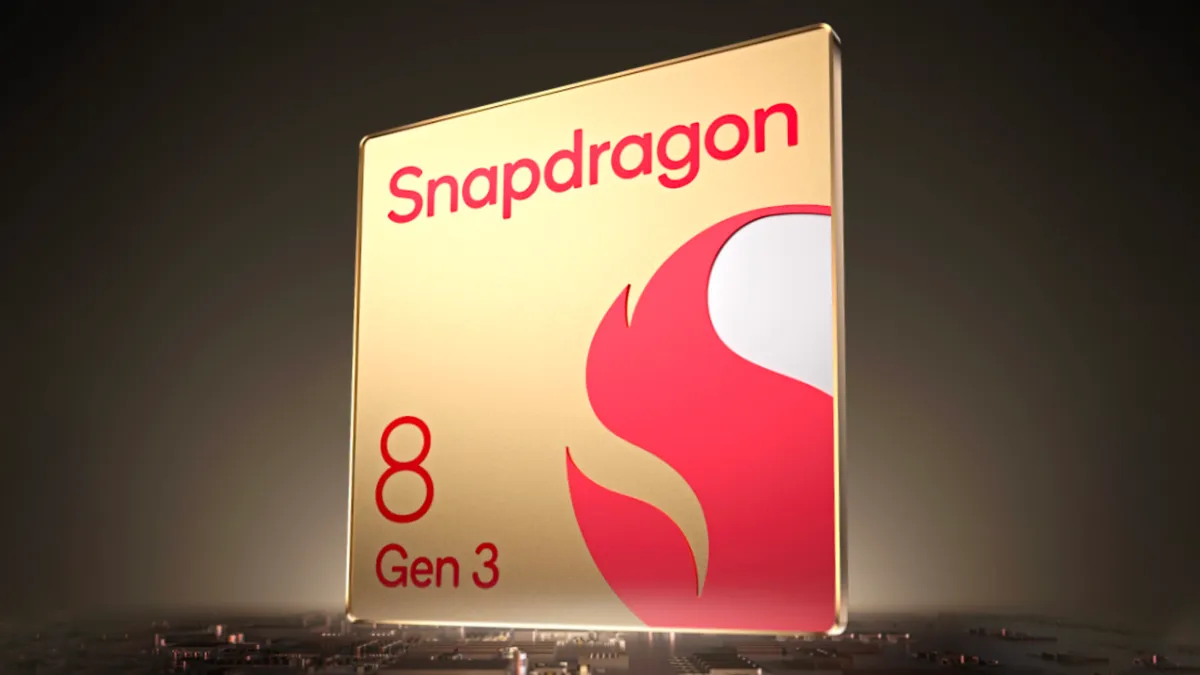
The Snapdragon 8 Gen 3, built using a 4nm manufacturing process by TSMC, was unveiled by Qualcomm in October 2023. This SoC continues to feature eight CPU cores, but with a new arrangement: a 1+5+2 configuration.
It consists of one Cortex X4 prime core (3.3 GHz), five Cortex A720 performance cores (three cores at 3.15 GHz and two cores at 2.96 GHz), and two Cortex A520 efficiency cores (2.27 GHz). While the number of efficiency cores has decreased, the performance cores have been boosted. Does this mean it's less energy-efficient?
Not at all! Qualcomm claims the CPU is 20% more power-efficient than the Snapdragon 8 Gen 2. The GPU and AI processor (NPU) have also seen similar improvements.
The Adreno 750 GPU (770 MHz, 2 cores) offers a 25% performance boost and is 25% more power-efficient than the Adreno 740 in the Snapdragon 8 Gen 2. As for the NPU, the new Hexagon component is reported to be 98% faster and 40% more energy-efficient than its predecessor.
The Snapdragon 8 Gen 3 also supports ray tracing and hardware AVI codec acceleration for video playback. Additionally, it offers Wi-Fi 7 connectivity and is compatible with LPDDR5x RAM and UFS 4.0 storage.
The iQOO 12 is the first smartphone in Indonesia to feature the Snapdragon 8 Gen 3. According to GSM Arena's tests, it scores 2,277 in Geekbench 6's single-core test and 6,953 in the multi-core test.
Other smartphones powered by the Snapdragon 8 Gen 3 include the Samsung Galaxy S24 Ultra, Xiaomi 14 and 14 Pro, ASUS ROG Phone 8 Pro, and OnePlus 12.
3. Snapdragon 8s Gen 3
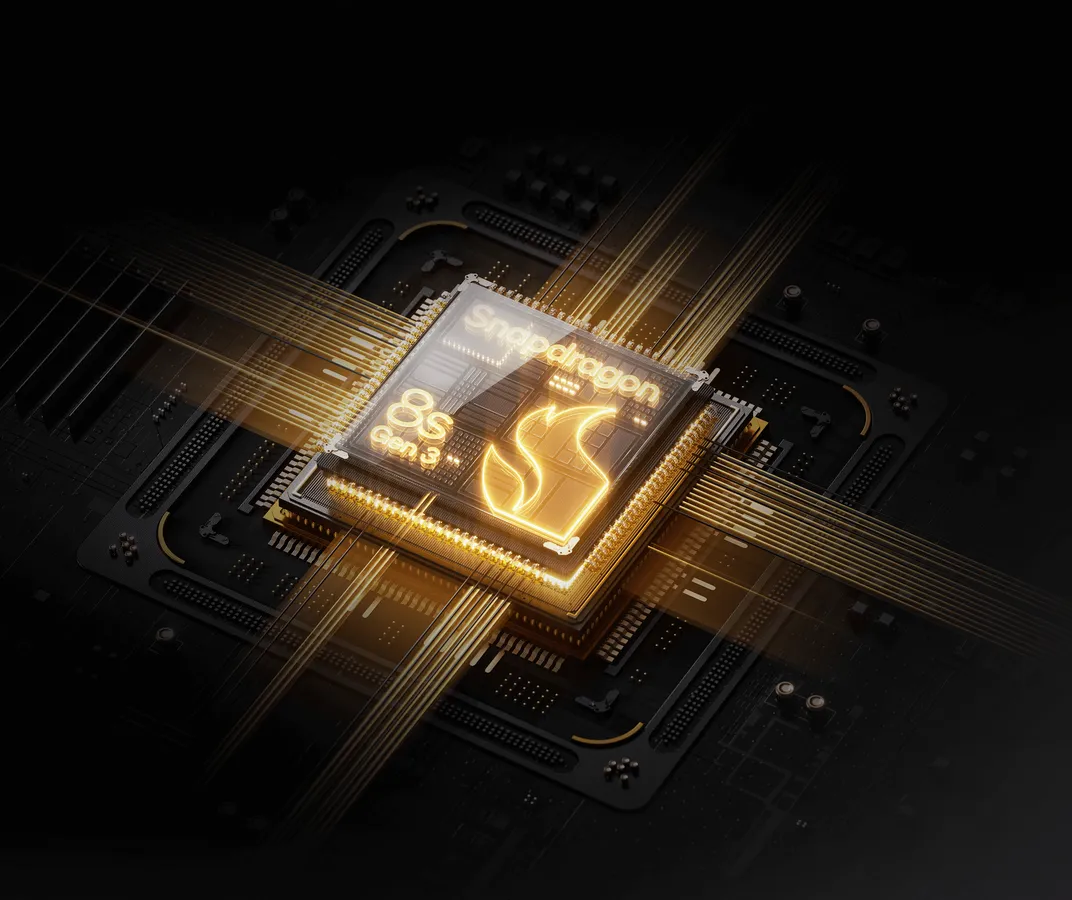
The Snapdragon 8s Gen 3 is Qualcomm's answer for phones seeking a balance between performance, efficiency, and affordability. The “s” designation indicates that this chip offers similar specifications to the Snapdragon 8 Gen 3 but with some adjustments in the CPU configuration.
As a result, while the performance may not be as powerful as the Snapdragon 8 Gen 3, the 8s Gen 3 excels in stability. This chipset is designed for users who want a flagship experience without paying the premium, making it ideal for “flagship killer” phones.
In terms of CPU architecture, the Snapdragon 8s Gen 3 features a 1x Cortex-X4 (3.0 GHz) + 4x Cortex-A720 (2.8 GHz) + 3x Cortex-A520 (2.0 GHz) configuration. In contrast, the Snapdragon 8 Gen 3 uses 1x Cortex-X4 (3.3 GHz) + 5x Cortex-A720 (3.2/3.0 GHz) + 2x Cortex-A520 (2.3 GHz).
The reduction in the number of performance cores and the decrease in frequency on the 8s Gen 3 make it more efficient, though multitasking and handling heavy loads may be slightly slower. This efficiency is reflected in the lower TDP (6W vs. 6.3W).
To simplify, think of the Snapdragon 8 Gen 3 as a 160cc motorcycle and the 8s Gen 3 as a 150cc motorcycle. Both are fast, but the 160cc version has more power.
This difference in performance is also evident in the graphics. The Adreno 735 GPU in the Snapdragon 8s Gen 3 supports features like hardware-accelerated ray tracing and Snapdragon Elite Gaming, but its performance is around 40-50% lower than the Adreno 750 in the Snapdragon 8 Gen 3.
In the 3DMark Wild Life test, the Adreno 735 scored 11,205 (67 FPS), while the Adreno 750 reached 17,108 (102 FPS). However, games like PUBG Mobile or Genshin Impact can still run smoothly at 60-120 FPS on high settings, provided they are well optimized.
Both chipsets have similar AI capabilities, with Hexagon NPU supporting AI models up to 10 billion parameters. However, the Snapdragon 8 Gen 3 benefits from a stronger CPU and GPU combination, offering faster processing speeds. For everyday tasks, though, this difference is hardly noticeable.
The Snapdragon 8s Gen 3 lacks some advanced features like Night Vision Video Capture or Video Object Eraser, which are available on the Snapdragon 8 Gen 3. In terms of photography, the 8s Gen 3 supports cameras up to 200 MP and 4K HDR 60fps video recording, but it falls short of the 8K 30fps and 4K 120fps capabilities of the 8 Gen 3.
Connectivity is another area where the two chips differ. The Snapdragon 8s Gen 3 uses an X70 modem with a maximum download speed of 5 Gbps, while the Snapdragon 8 Gen 3 has the X75 modem, supporting speeds of up to 10 Gbps. However, both support Wi-Fi 7 and Bluetooth 5.4, ensuring excellent wireless performance.
In synthetic benchmarks, the Snapdragon 8s Gen 3 scores around 1.5 million on AnTuTu, well below the Snapdragon 8 Gen 3's 2.05 million.
The Geekbench 6 scores also show a significant gap: 1,638 vs. 2,192 for single-core and 3,991 vs. 7,085 for multi-core. While these differences are noticeable in benchmarks, everyday use such as browsing, social media, or casual gaming may not show a significant impact.
Phones featuring the Snapdragon 8s Gen 3 include the realme GT6, POCO F6, and Xiaomi 14 Lite.
In my view, the Snapdragon 8s Gen 3 is Qualcomm's response to the demand for a mid-range chipset that balances performance, efficiency, and price.
4. Snapdragon 8 Gen 2

I found myself a bit unsure about whether to rank the Snapdragon 8 Gen 2 above or below the Snapdragon 8s Gen 3. In terms of performance, both chips excel in different areas, and benchmark results also suggest the Snapdragon 8 Gen 2 is slightly ahead of the 8s Gen 3.
However, after conducting more research, I’ve placed the Snapdragon 8 Gen 2 below the Snapdragon 8s Gen 3.
For example, according to tests by Beebom, the Snapdragon 8s Gen 3 outperforms the 8 Gen 2 in CPU throttling, showing better and more stable results. Additionally, the Yugatech website mentions that the Snapdragon 8s Gen 3 delivers superior CPU performance.
On the GPU side, however, the Snapdragon 8 Gen 2 has the edge, supporting video recording up to 8K, while the 8s Gen 3 is limited to 4K. This makes me confident in my decision to rank the Snapdragon 8s Gen 3 above the 8 Gen 2.
The Snapdragon 8 Gen 2, while still a great chipset, belongs to a different generation. It features a single 3.2 GHz Cortex-X3 prime core, along with two performance clusters: two Cortex-A715 cores (2.8 GHz) and two Cortex-A710 cores (2.8 GHz).
For power efficiency, it uses three Cortex-A510 cores at 2.0 GHz, along with a GPU clocked at 680 MHz.
According to NanoReview, the Snapdragon 8 Gen 2 scores 1,553,197 on AnTuTu v10. Its Geekbench 6 score is 1,991 for single-core and 5,299 for multi-core.
One notable new feature of the Snapdragon 8 Gen 2 is Horizon Levelling Stabilization, which ensures steady video footage, even during vigorous movements or when tilting the phone. The 8 Gen 2 also introduces ray tracing to mobile gaming, alongside its competitor, the Dimensity 9200.
On the photography front, the Snapdragon 8 Gen 2 features an improved ISP, which uses semantic segmentation to enhance photo quality by recognizing and grouping different parts of the subject.
The iQOO 11 was the first phone to use the Snapdragon 8 Gen 2, and Qualcomm has also released a slightly upgraded version called the Snapdragon 8 Gen 2 Leading Version.
This variant boosts the Cortex-X3 prime core’s clock speed to 3.36 GHz, up from 3.2 GHz, and increases the GPU clock speed to 719 MHz from 680 MHz.
The Snapdragon 8 Gen 2 Leading Version powers devices like the nubia Red Magic 8S Pro and the Samsung Galaxy S23 Ultra (which uses a version called Snapdragon 8 Gen 2 for Galaxy).
5. Snapdragon 7+ Gen 3
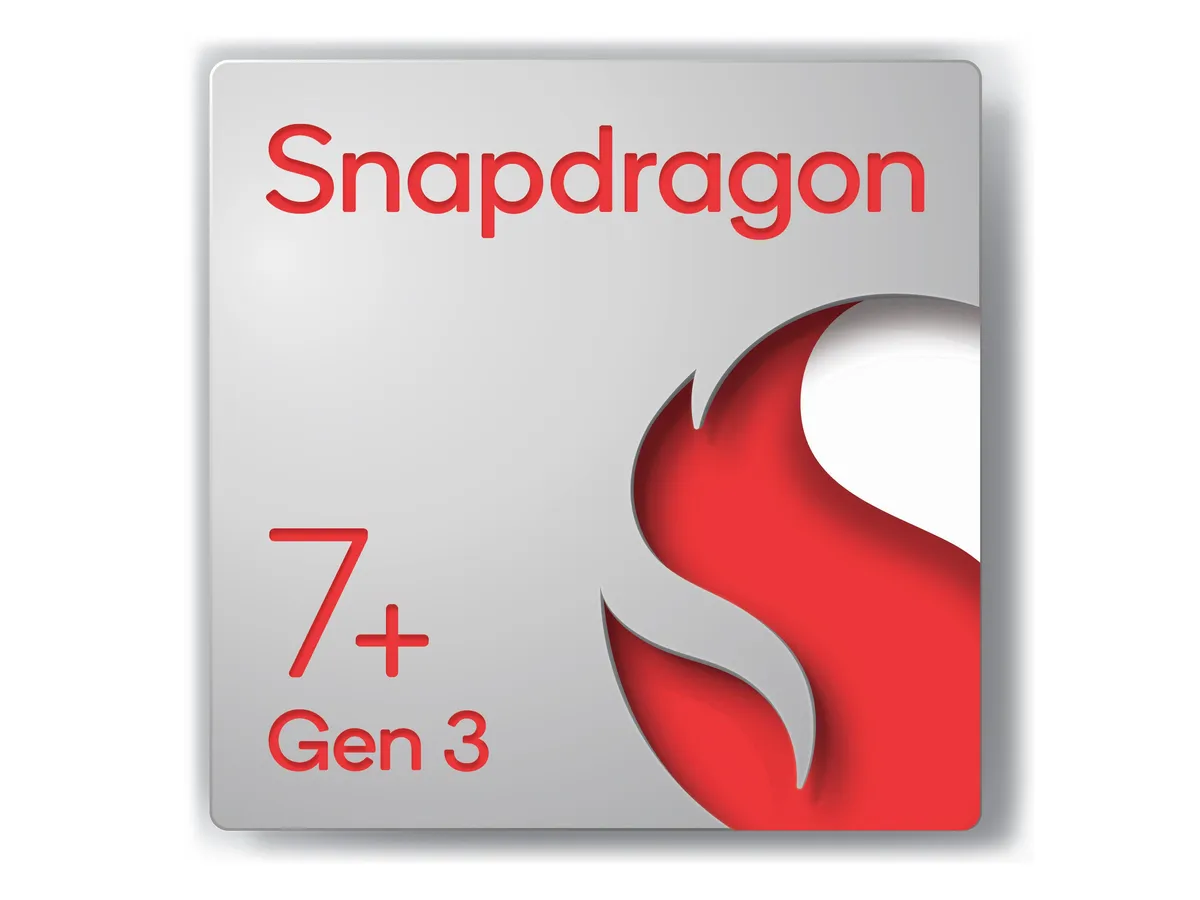
Looking ahead, it's clear that the Plus version of the Snapdragon 7 series is evolving to match the capabilities of the Snapdragon 8 series. This isn't just speculation—it's evident in the Snapdragon 7+ Gen 3, which offers performance that comes close to the Snapdragon 8s Gen 3, though it remains a bit simpler.
The Snapdragon 7+ Gen 3 is designed to provide solid performance for everyday tasks and light gaming, with better power efficiency and a more affordable price compared to the Snapdragon 8 series.
The addition of the “+” in its name indicates significant improvements over the Snapdragon 7 Gen 3, but in terms of performance, it’s quite comparable to the Snapdragon 8s Gen 3.
Built using 4nm fabrication technology, the Snapdragon 7+ Gen 3 features an octa-core CPU with one 2.8 GHz Cortex-X4 core as the main core.
For performance tasks, it has four Cortex-A720 cores running at 2.6 GHz, and for energy efficiency, it includes three Cortex-A520 cores at 1.9 GHz. The GPU, an Adreno 732, runs at a clock speed of up to 950 MHz.
For enhanced gaming, the GPU includes features like the Snapdragon Elite Gaming Post Processing Accelerator and the Adreno Frame Motion Engine 2. The chipset supports LPDDR5x RAM with a maximum bandwidth of 64 Gbit/s and UFS 4.0 storage for faster data access.
On the multimedia side, the Snapdragon 7+ Gen 3 integrates Qualcomm's ISP 8-bit, supporting screen resolutions up to QHD+ (3840 x 2160 pixels) with a 120 Hz refresh rate. It can handle up to 200 MP cameras and 4K video recording at 60 fps.
In terms of connectivity, the Snapdragon 7+ Gen 3 uses the Snapdragon X63 5G modem, which supports download speeds of up to 5 Gbps and upload speeds of up to 3.5 Gbps. It also supports Wi-Fi 7 and Bluetooth 5.4, ensuring a fast and responsive wireless experience.
The Hexagon NPU in this chipset supports AI models with up to 5 billion parameters, which is half the capability of the Snapdragon 8s Gen 3.
While it excels at features like AI Noise Cancellation and Background Blur during video calls, it may struggle with more complex AI tasks, such as generating images from text.
In synthetic benchmarks, the Snapdragon 7+ Gen 3 delivers solid performance, scoring 1,366,982 points on AnTuTu v10 and achieving 1,913 points in single-core and 5,098 points in multi-core on GeekBench 6. This positions it as a mid-range processor with strong capabilities.
Phones featuring the Snapdragon 7+ Gen 3 include the OnePlus Nord 4 5G, OnePlus Ace 3V 5G, realme GT 6T 5G, and realme GT Neo6 SE 5G, which all offer excellent performance and power efficiency, catering to users seeking a superior gaming and multimedia experience.
6. Snapdragon 8 Gen 1 and 8+ Gen 1
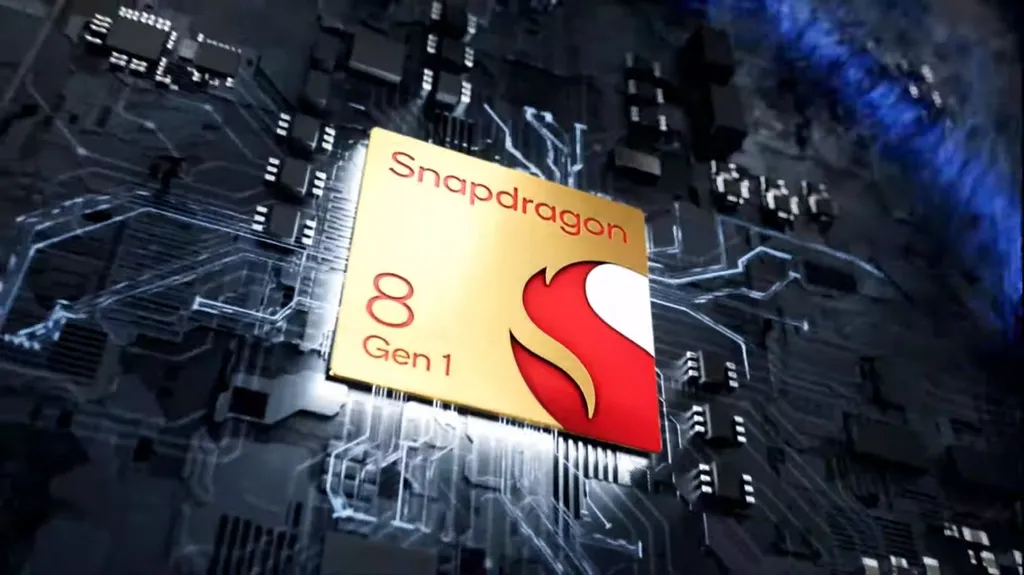
The Snapdragon 8 Gen 1 marked Qualcomm's first high-end chipset with a new naming convention, succeeding the Snapdragon 888 and 888+. Going forward, Qualcomm continues the pattern with Snapdragon 8 Gen 2, Gen 3, and so on.
Released in 2022, the Snapdragon 8 Gen 1 stands out as one of the top chipsets of the year. It offers a 20% performance boost over its predecessor and is claimed to be 30% more efficient than the Snapdragon 888.
The chipset features an Armv9 CPU with three clusters. The main processor is the Cortex-X2 with a clock speed of 3.0 GHz. The second cluster includes three Cortex-A710 cores running at 2.5 GHz, while the third cluster consists of four Cortex-A510 cores at 1.8 GHz.
On the GPU side, the Snapdragon 8 Gen 1 is equipped with an Adreno 730 GPU. Qualcomm claims this GPU provides a 30% graphics improvement and a 25% power savings compared to the previous generation.
It also supports Vulkan API, offering a 60% performance boost, which is particularly useful for advanced 3D and emulator games that demand high graphical power.
Several high-end phones feature the Snapdragon 8 Gen 1, including the Xiaomi 12 and 12 Pro, the Samsung Galaxy S22 series (which is available in Indonesia), and the realme GT2 Pro.
To address thermal issues with the standard version, Qualcomm released the Snapdragon 8+ Gen 1, which uses TSMC’s 4nm fabrication process instead of Samsung’s. This switch reduces heat buildup, allowing the phone to maintain peak performance for longer periods.
The Snapdragon 8+ Gen 1 boasts a 10% increase in CPU and GPU performance, alongside a 30% improvement in power efficiency. This makes it a more stable and efficient option compared to the regular Snapdragon 8 Gen 1.
Phones equipped with the Snapdragon 8+ Gen 1 include the ASUS ROG Phone 6 series, the Samsung Galaxy Z Fold 4 and Flip 4, the Xiaomi 12S Ultra, the iQOO 10 Pro, and others.
7. Snapdragon 7+ Gen 2
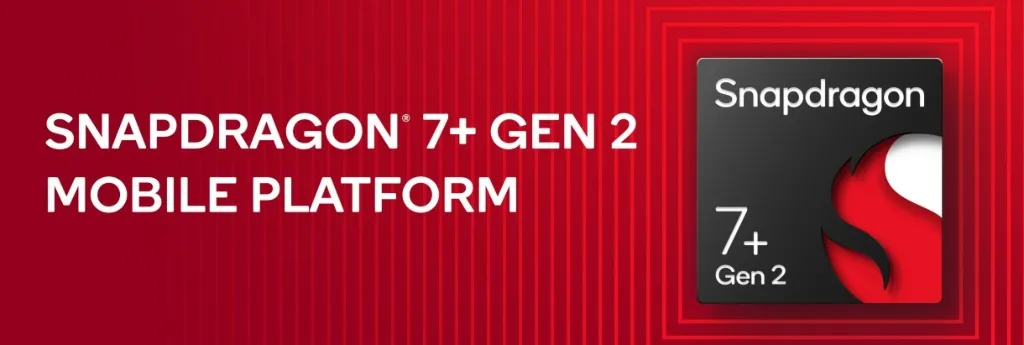
Qualcomm introduced the Snapdragon 7+ Gen 2 in March 2023, claiming it to be the fastest chipset in the Snapdragon 7 series to date. The leap in performance compared to the Snapdragon 7 Gen 1 is substantial.
The Snapdragon 7+ Gen 2 offers 50% better CPU performance and a doubling of GPU performance, along with a 13% improvement in power efficiency. How did this happen?
The key lies in the adoption of technology from the Snapdragon 8 series. For the first time, the Snapdragon 7+ Gen 2 uses the Cortex X Series for its CPU. It features a 1-3-4 core configuration: one Cortex-X2 super core running at 2.91 GHz, three Cortex-A710 performance cores at 2.49 GHz, and four Cortex-A510 efficiency cores at 2.0 GHz.
On the GPU side, the Snapdragon 7+ Gen 2 is equipped with an Adreno 725 GPU, which can run at a clock speed of up to 580 MHz and achieve a computing speed of 1,781 Gigaflops.
This chipset is built using 4nm TSMC fabrication, and it supports LPDDR5 RAM running at 3200 MHz and UFS 3.1 storage, ensuring fast data processing. It also supports Wi-Fi 6E and Bluetooth 5.3, offering a responsive wireless experience.
In terms of multimedia, the Snapdragon 7+ Gen 2 features the Spectra ISP, which supports cameras up to 200 MP. The AI Hexagon processor has been improved, offering twice the performance of its predecessor.
This allows for impressive photo and video capabilities, including 4K video recording at 60 fps and a 4K resolution screen at 60 Hz, or 2K with a 120 Hz refresh rate.
The Snapdragon 7+ Gen 2 powers devices like the POCO F5, which scored 978,264 on AnTuTu 9. In Geekbench 5 tests, it achieved 1,225 points in the single-core scenario and 3,999 points in the multi-core test, as demonstrated in tests by the YouTube channel Dhiarcom on the Redmi Note 12 Turbo.
The Snapdragon 7+ Gen 2 shows remarkable progress, positioning itself closer to the Snapdragon 8 series, surpassing older chips like the Snapdragon 870 and Snapdragon 888.
8. Snapdragon 888 and 888+
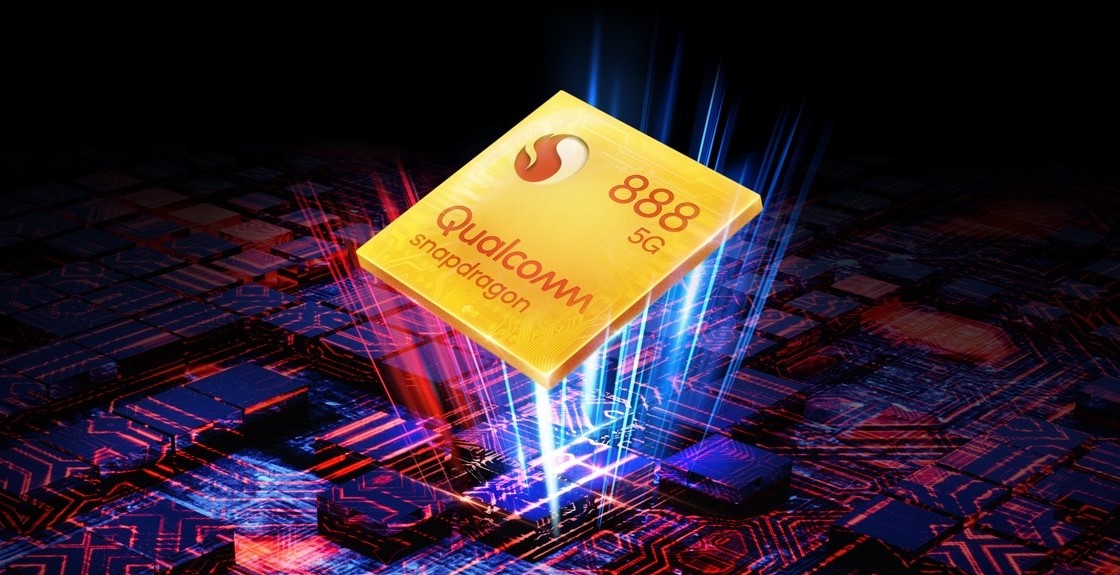
Released in 2021, the Snapdragon 888 5G quickly became one of the fastest chipsets in the Android ecosystem, delivering top-tier performance. Phones equipped with this chipset often score between 600,000 to 700,000 points on AnTuTu, which is impressive for the time.
Built using a 5nm fabrication process, the Snapdragon 888 features a three-cluster CPU configuration. The first cluster, the Kryo 680, includes four cores running at 1.8 GHz for power efficiency.
The second cluster consists of three Kryo 680 cores at 2.42 GHz for balanced performance. Finally, the Kryo 680 prime cluster has one core running at 2.84 GHz for peak performance.
These specifications allow smartphones with the Snapdragon 888 to achieve AnTuTu scores in the 700,000 range. But performance isn't the only standout feature.
The chipset also offers significant advancements in camera capabilities, such as low-light image capture down to 0.1 Lux, making it ideal for photography in various lighting conditions.
Additionally, the Snapdragon 888 5G is equipped with the Qualcomm Spectra 580 ISP, which includes three image signal processors.
This enables tasks to be completed up to 25% faster. The chipset also boasts modern features such as FastConnect 6900 for 6 GHz Wi-Fi, 4K QAM, and Bluetooth 5.2 support.
Despite its impressive performance, some users reported thermal issues with devices powered by the Snapdragon 888. While these issues weren’t major, they did affect some devices. Phones like the Xiaomi Mi 11, Mi 11 Ultra, OPPO Find X3 Pro, ASUS ROG Phone 5, and ASUS Zenfone 8 all use the Snapdragon 888 5G.
In response to the thermal concerns, Qualcomm released the Snapdragon 888+, which is a slightly upgraded version of the original chipset. Announced at Mobile World Congress, the Snapdragon 888+ features a Kryo 680 core with an increased clock speed of 2.995 GHz, up from 2.84 GHz.
Additionally, it’s powered by Qualcomm’s 6th-generation AI Engine, offering a 20% performance boost with a peak of 32 TOPS (Tera Operations Per Second), compared to the regular Snapdragon 888's 26 TOPS.
9. Snapdragon 7 Gen 3
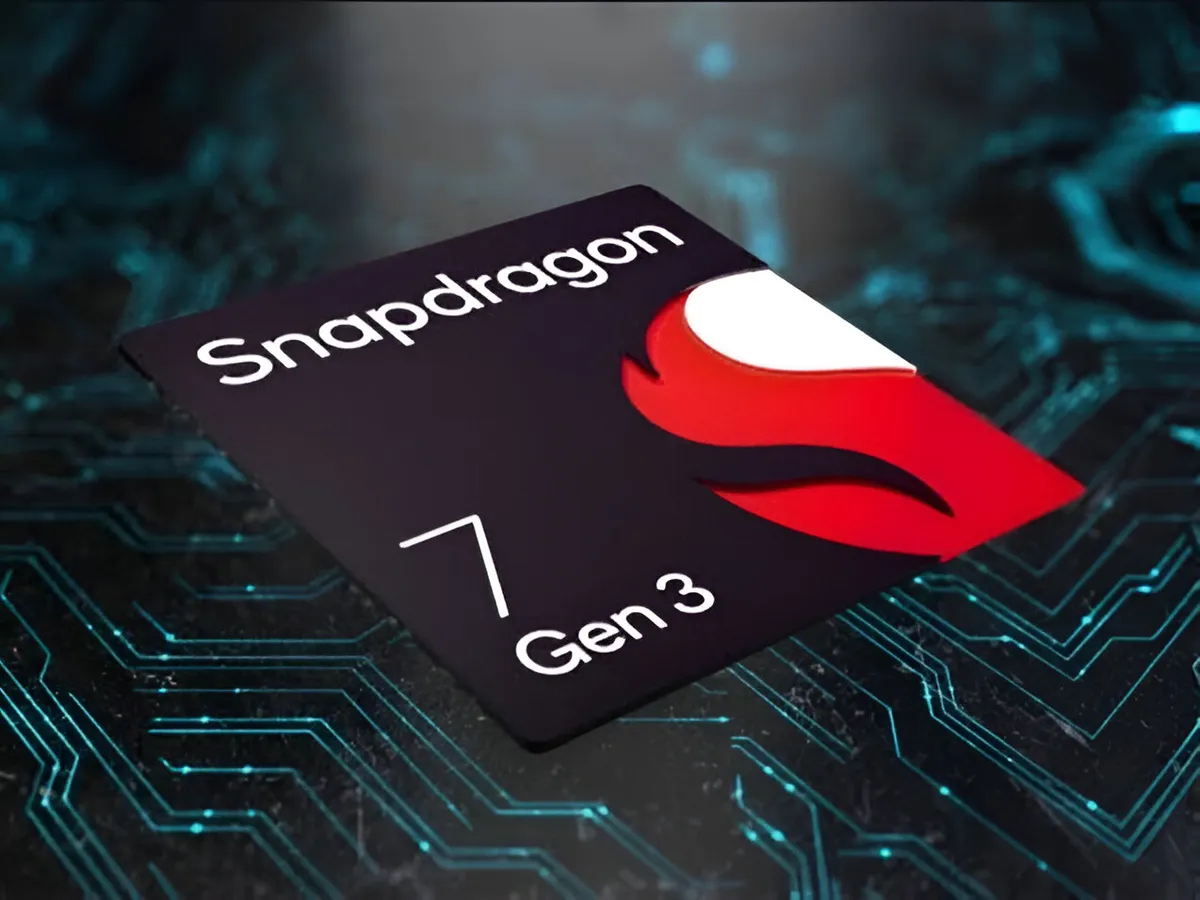
The Snapdragon 7 Gen 3 is a 5G chipset from Qualcomm, set for release in November 2023. Although many consider the Snapdragon 7 Gen 3 to be a successor to the Snapdragon 7+ Gen 2, this is actually a misconception. In reality, the Snapdragon 7 Gen 3 follows the Snapdragon 7 Gen 1.
Manufactured using TSMC's 4nm process, the Snapdragon 7 Gen 3 features an eight-core processor and the Adreno 720 GPU. The processor includes four Cortex A715 cores (1x 2.63 GHz + 3x 2.4 GHz) and four Cortex A510 cores (1.8 GHz). The chipset supports LPDDR5 RAM and UFS 3.1 storage.
Qualcomm highlights the Spectra ISP in the chipset, which includes AI features like Remosaic and AI Video Retouch. These features improve photo and video quality by making images sharper, reducing noise, and ensuring consistent colors. The Snapdragon 7 Gen 3's AI capabilities are said to be 60% more power-efficient than its predecessor.
Performance improvements are evident across both the CPU and GPU. The CPU’s computing capability has increased by 15%, while power consumption has improved by 20%. On the GPU side, graphics processing performance has grown by over 50%, all without additional power consumption.
The Snapdragon 7 Gen 3 is compatible with Full HD+ displays running at up to 168 Hz, supports cameras up to 200 MP, and can process videos in 4K resolution.
The Geekbench 6 SoC scores were 1129 for single-core and 3255 for multi-core, as reported by the Tech Spurt YouTube channel. Based on these results, the Snapdragon 7 Gen 3 offers excellent performance for a mid-range chipset.
10. Snapdragon 870
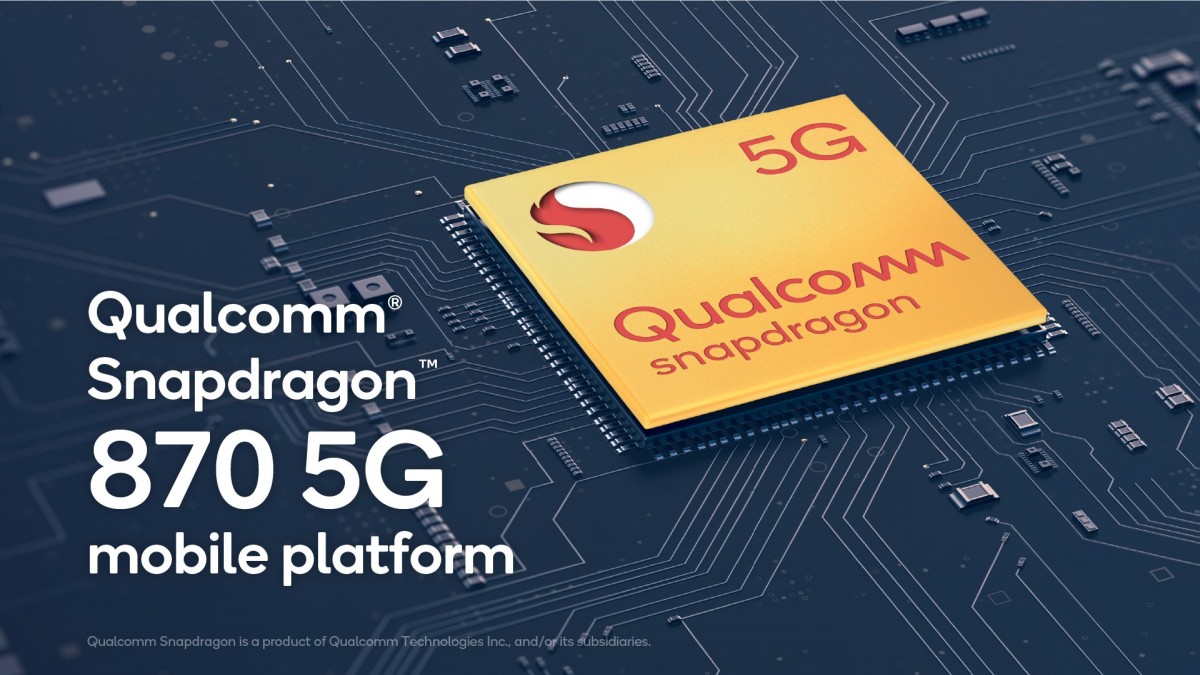
The Snapdragon 870 is a 5G chipset from Qualcomm, widely used in premium smartphones released in 2021. In Indonesia, devices like the POCO F3, vivo X60, and vivo X60 Pro feature this chipset, and it has seen global adoption by several smartphone brands.
The Snapdragon 870 was introduced as a more power-efficient alternative to the Snapdragon 888, which many users found too fast and prone to heating issues.
Essentially, the Snapdragon 870 is an enhanced version of the Snapdragon 865+, offering improved performance without the overheating problems.
The chipset features three processor clusters. The Kryo 585 power-efficient cluster consists of four cores running at 1.8 GHz, while the performance cluster has three Kryo 585 cores clocked at 2.42 GHz.
The prime Kryo 585 cluster, with one core running at 3.2 GHz, offers the highest performance. The main difference from the Snapdragon 865+ is the 0.1 GHz increase in the prime cluster, with the GPU and other features remaining mostly unchanged.
